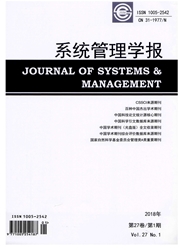

 中文摘要:
中文摘要:
为提高震后应急物资配送绩效,针对应急物资配送中心选址与配送车辆路径安排的集成优化问题,综合考虑应急物资需求的模糊性、限制期和多次往返配送,有限数量不同类型的配送车辆,开放式车辆路径,有容量限制的临时物流设施选址以及震后路网部分受损等特点,以各物资需求点的应急物资运达时间之和以及系统总成本最小为目标,采用机会约束规划方法建立了一个模糊多目标开放式定位-路径问题(LRP)优化模型,并设计了一种结合启发式规则的混合遗传算法。最后,对该模型和算法进行了数值验证,并通过与NSGA-Ⅱ多目标遗传算法的比较,证明该混合遗传算法具有良好的性能,从而为解决震后应急物资配送的模糊多目标LRP提供了有效的方法。
 英文摘要:
英文摘要:
To enhance the efficiency of delivering relief materials after an earthquake disaster, the integrated optimal decision of locating emergency distribution centers and scheduling routes of delivery vehicles is studied. A chance-constrained programming model for fuzzy multi-objective open locationrouting problem (LRP) with round trips and deadline is developed, taking into consideration of the following characteristics, fuzzy demand of relief materials, impact of partially damaged road networks, finite number of heterogeneous capacitated vehicles, temporary capacitated logistics facility location, open vehicle routing with round trips and deadlines. The objective is to minimize the total time of delivering relief materials to all affected areas and the total system cost. A hybrid genetic algorithm (HGA) based on the idea of holistic solution is proposed by incorporating heuristic rules. The feasibility and validity of the model and algorithm are demonstrated by a numerical example. The results show that the proposed HGA has good performance, compared with NSGA-II, and the model and algorithm provide an effective way to resolve the fuzzy multi-objective open LRP with split deliveries and deadlines in post-earthquake relief deliveries.
 同期刊论文项目
同期刊论文项目
 同项目期刊论文
同项目期刊论文
 Collective Recycling Responsibility in Closed -Loop Fashion Supply Chains with a Third Party: Financ
Collective Recycling Responsibility in Closed -Loop Fashion Supply Chains with a Third Party: Financ 期刊信息
期刊信息
